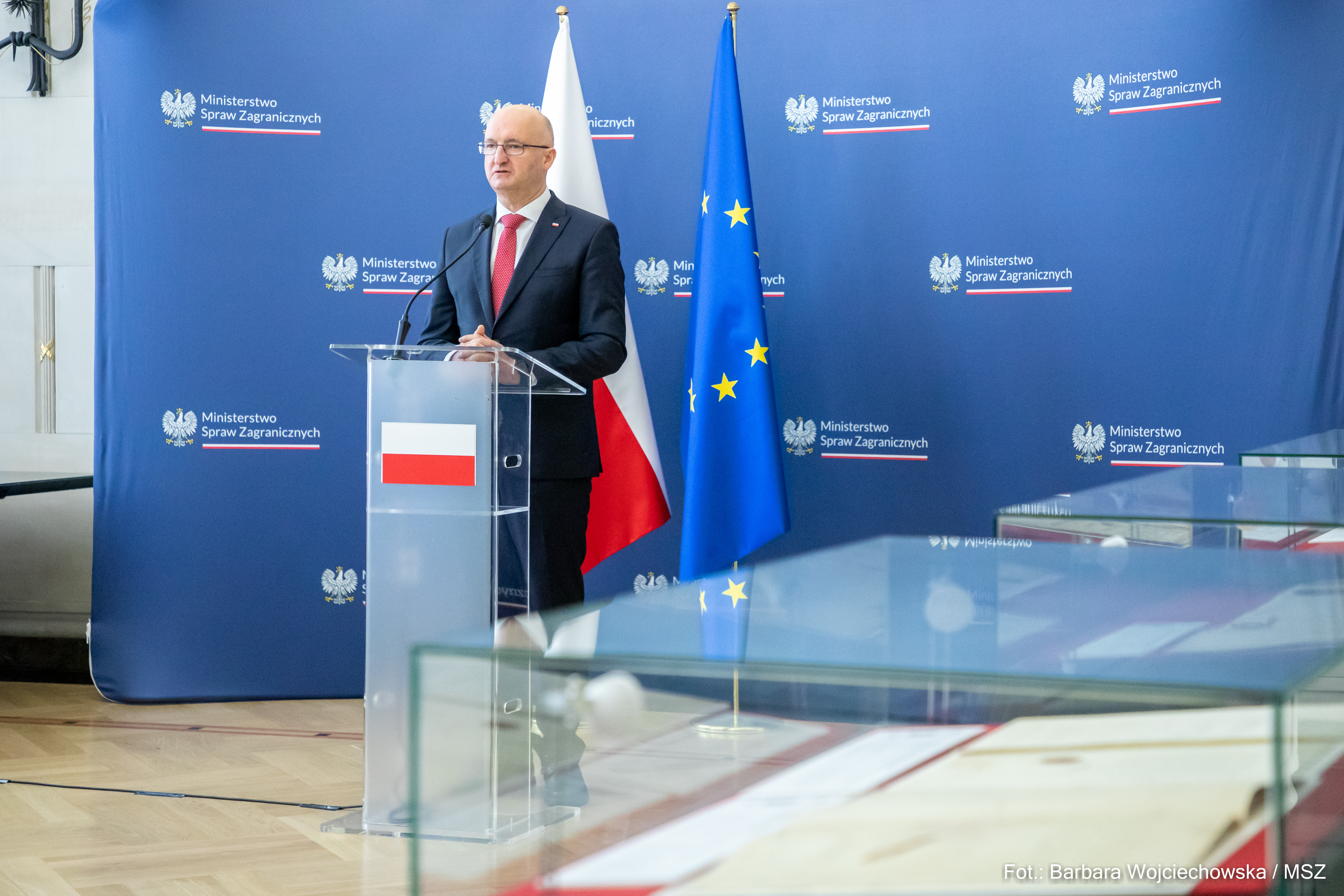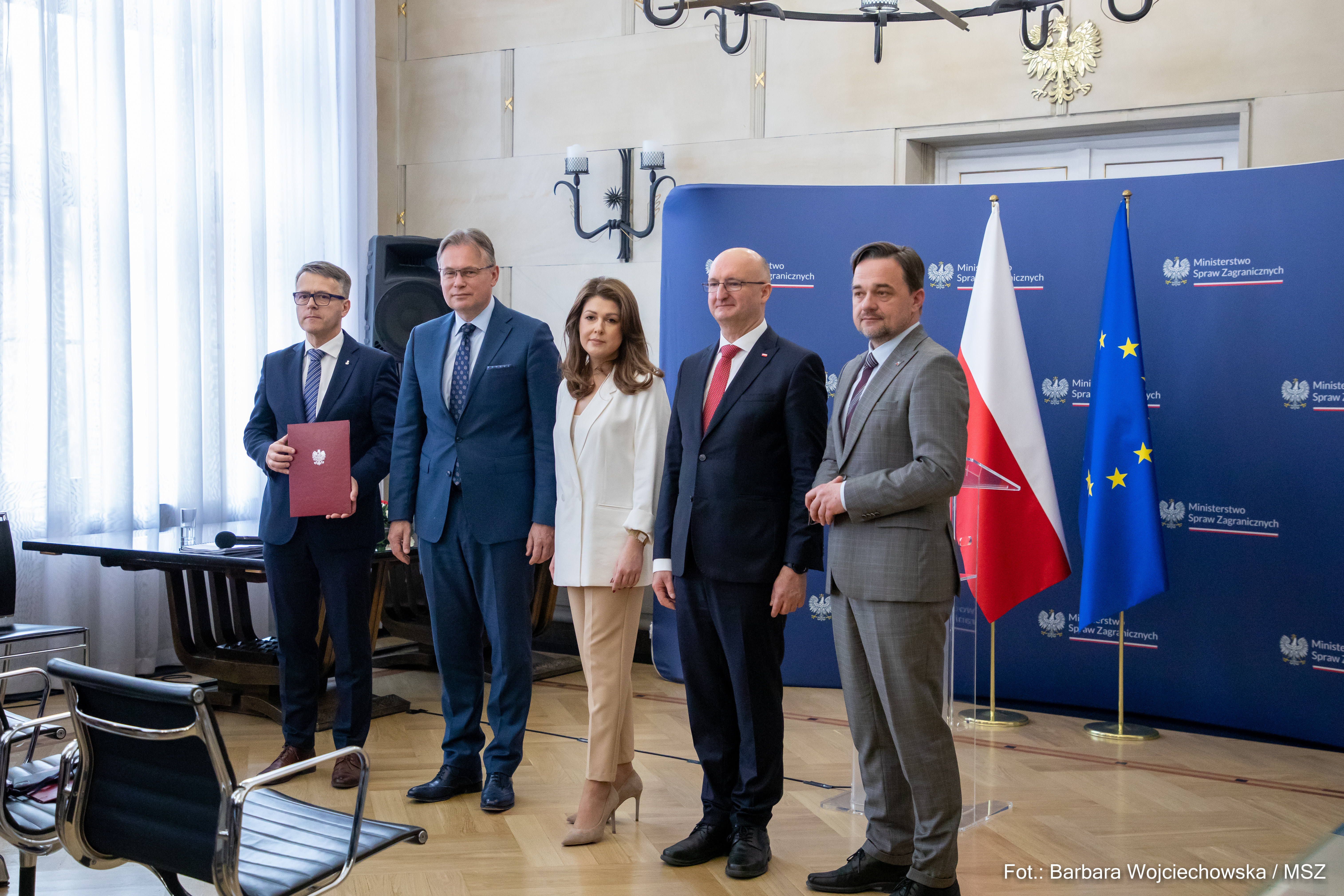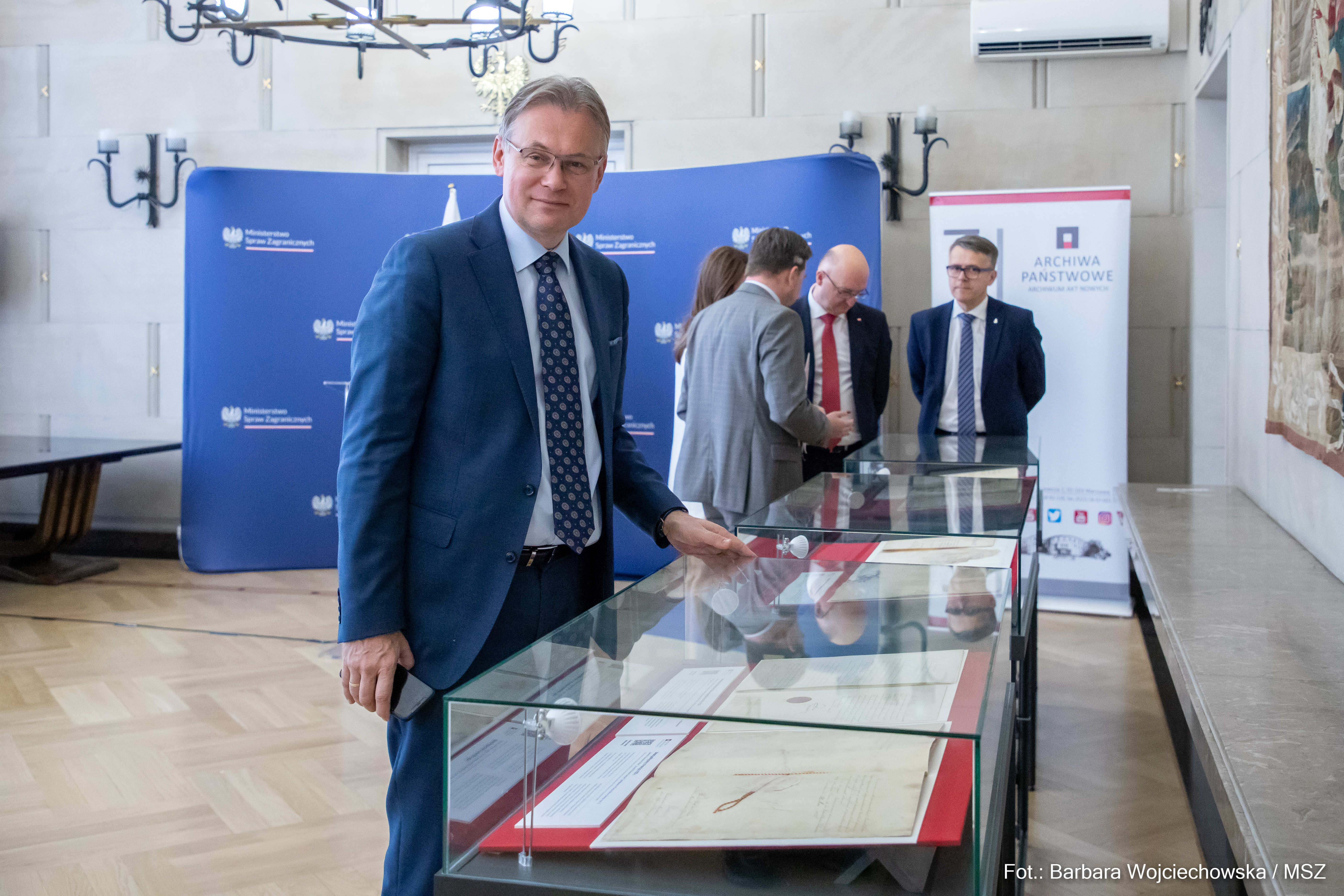Ceremony to hand over the Treaty of Riga and other archival documents
30.03.2023
On 30 March 2023, the Ministry of Foreign Affairs organised a ceremony to hand over the more than 100 years old Treaty of Riga and other documents of the fonds no. 5 to the Archives of Modern Records.

Deputy Foreign Ministers Piotr Wawrzyk and Arkadiusz Mularczyk were present at the event, as well as General Director of State Archives Paweł Pietrzyk and Director of the Archives of Modern Records Mariusz Olczak.
The fonds no. 5 contains bilateral and multilateral agreements signed by Poland, as well as advisory opinions, rulings, and orders of the Permanent Court of Justice dating back to 1918-1939. The delivery and receipt list holds 693 items, the most eminent of which is the Treaty of Riga of 1921, which put an end to the war of 1919-1920 between Poland and the Bolshevik Russia, set borders between the two states, and settled other contentious issues.
During the ceremony, the showcases exhibited:
1. The Treaty of Riga of 1921 – “Treaty of peace between Poland, Russia and the Ukraine, signed in Riga on 18 March 1921”, ratified by Poland on 16 April and became enforceable on 30 April.
2. German–Polish declaration of non-aggression of 1934 – “Declaration of non-aggression between Poland and Germany, signed in Berlin on 26 January 1934”. The document did not take the form of a treaty, but was a bilateral agreement ratified by the Polish side on 15 February. It was intended to remain in force for 10 years.
3. Convention on a defence alliance with Romania of 1921 – “Convention on defensive alliance between the Republic of Poland and the Kingdom of Romania [signed in Bucharest on 3 March 1921]”. The agreement was ratified by the Polish side on 18 July. It was supposed to remain in force for five years and was prolonged by two subsequent treaties of 1926 and 1931.
4. Political arrangement with France of 1921 – “Franco-Polish Alliance” [signed in Paris on 19 February 1921]. The agreement was ratified by the Polish side on 30 May 1922, and its provisions were to formally enter into force after the signing (on 6 February 1922) and ratification (on 30 May 1922) of additional trade agreements.
The documents were issued as the result of the Ministry of Foreign Affairs implementing the foreign policies of the government of the Republic of Poland. Prior to the outbreak of the Second World War, they were stored at the MFA headquarters at the Brühl Palace. In September 1939, they were evacuated together with the entire office and travelled via Kazimierz and Lutsk to Kremenets and Bilokrynytsia. On 13-15 September, in view of the approaching German troops, the destruction of the documents began. As the set of treaties was priceless, it was decided that they be buried in the dungeons of the Bilokrynytsia palace. The documents were discovered by the NKVD and taken to Moscow in April 1941. After the war, the set of treaties was handed over to the embassy of the Polish People’s Republic in Moscow, which sent the materials further to the MFA Archives. They arrived in Warsaw on 3 May 1948.
During today’s ceremony, Deputy Minister Wawrzyk underlined the importance of acquiring such historical documents and transferring them to specialised institutions who are able to restore their old magnificence. In his opinion, it is equally important to ensure access to those documents for all individuals willing to research the history of the Second Polish Republic.
Deputy Minister Mularczyk noted that the Treaty of Riga not only mapped Poland’s eastern border, but also awarded Poland 30 million roubles in gold for the benefits obtained by Russia during 123 years of exploitation of Polish lands. He added that Poland has not received the money until this day. Moreover, out of all the works of art, archives and other war trophies stolen from Poland, only a small part has been recovered. “Today, this debt falls on the heirs of Bolshevik Russia, and it is incumbent on us to demand its reparation. We owe it to our homeland and our predecessors”, said Deputy Minister Mularczyk.
***
The documents will be stored in the Archives of Modern Records, which have appropriate conditions to take care of old prints, including a modern paper laboratory and a fumigation chamber.
Łukasz Jasina
MFA Spokesperson





